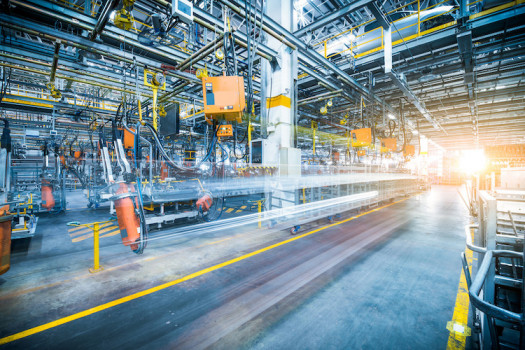
Industry News - Will India Overtake China?
Will the consequences of COVID-19 change the alignment of manufacturing facilities in the world? India to become the next industrial center after China?
We continue to introduce you to the latest interesting news from the world of industry in the framework of # Enex_industry news. Today - a potential shift in the production capacity of global companies from China.
As the world joins the fight against the Covid-19 pandemic, some changes are happening quickly. The most significant change is the preliminary shift of manufacturing companies from China. In this regard, it should be noted that Wuhan, the Chinese province where the Coronavirus is believed to have originated, is also one of the largest manufacturing centers in the world. Although China is returning to normalcy, companies are no longer comfortable working in it. Against this backdrop, India is expected to have a fantastic chance to replace China as the world's manufacturing capital.
As the Covid-19 pandemic takes over the world as a vice, the question is, can India benefit from a global push to shift focus away from China-based supply chains?
Beijing's clumsy efforts to tackle the pandemic in the beginning, as well as its huge role in the supply of protective medical equipment such as masks and gowns, are of global concern.
As more and more global companies seek to transfer production from China, for example, the German footwear brand Casa Everz Gmbh has become an extreme, which has completely moved its entire production base from China to India. This happened shortly after the government of Uttar Pradesh held a webinar with several international companies in an attempt to convince them to invest in their country.
Recently, some industries have realized the disadvantages of overdependence of their production on one country and have begun to seek to expand the geographical distribution of their capacities.
India's growth story will continue to demand free flows of capital, labor, goods and services. In a world of growing distrust of China, India can become part of and benefit from many new economic ties.
India needs another engine of growth in the developing world after the pandemic. Large-scale manufacturing offerings may be one such opportunity. China beat India in this pre-coronavirus world game, but in a new world where China is distrusted, India can create its own power.
A decade ago, China overtook the United States to become the world's leading manufacturing hub. However, China's growth as a global manufacturing plant began back in the 1980s, initially as a low-cost manufacturer that has gradually evolved into a manufacturing hub for everything under the sun - from medicines to electronic gadgets. China accounted for 28 percent of global production in 2018, according to the UN Statistics Division. However, the coronavirus epidemic has begun to change this scenario in various ways. The supply shock caused by the closure of China has prompted global companies to seek new production centers as part of a strategy to hedge their risks for the future.
Events like these have opened up an opportunity for India that can pay rich dividends by creating an enabling environment for manufacturing and offering lucrative resources to global organizations to establish operations in India. The reports indicated that a large number of companies had already begun negotiations with the Indian authorities, seeking to implement production plans in the country in sectors such as electronics (approx. A few days ago it was revealed that Samsung, Apple's contract manufacturing partners Foxconn, Wistron and Pegatron, as well as Indian smartphone manufacturers Micromax and Lava, among other 20 global companies, have applied for participation in India's $ 6.6 billion state program aimed at stimulating local production), medical devices and textiles, in particular.
Interestingly, the protracted battle between China and the United States over trade tariffs has already made global companies nervous about having the bulk of their manufacturing centers in China. The COVID-19 pandemic further strengthened and accelerated their plans to diversify production facilities outside of China. In this situation, many countries turned out to be quite acceptable production options. Vietnam, Indonesia, Cambodia and Singapore, apart from India, are important options that global companies have considered.
The government has already focused on leveraging the manufacturing sector to create jobs for millions of Indians through initiatives such as Make in India and Skill India. Further training to create a large pool of qualified human resources is also an important element of training. When the world looked to outsourcing its work in the service industry two decades ago, there were already many IT experts and English-speaking alumni in India who could seize the opportunity and help make India a hub for international services.
Likewise, in order to become the most preferred manufacturing center, India needs a ready pool of skilled workers in all areas. As automated processes become the norm in every sector, the nature of jobs has also changed. The emergence of IT-enabled technologies across all sectors has created a demand for 3D printing professionals, automotive analysts, apparel data analysts, and more. It is imperative that India enhances the skills of its workforce to address these near-future needs.
We will see if the Indian manufacturing sector is up-to-date and plan a long-term approach to attracting a large chunk of the international manufacturing business pie pending relocation from China.
